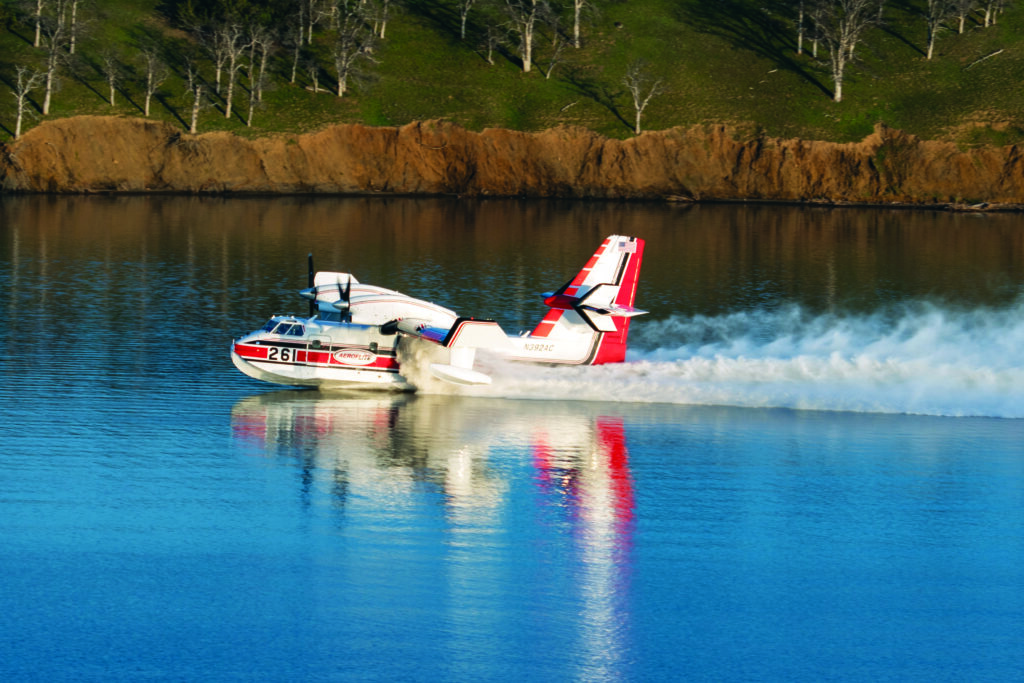
Aero-Flite, the U.S. subsidiary of Canadian-based Conair, has been working hard this year to onboard new pilots and continue to provide next-level training for their existing pilots.
AerialFire joined this year’s training in Chico, California, where the Aero-Flite team showed up in full force from their home hangars in Spokane, Washington. This is the third year providing their 57 pilots training over a three-week period at Northgate Aviation FBO in northern California. Three RJ85 airtankers and two CL-415 scoopers took part, along with the Dash 8-400AT (Q400AT), making its first training appearance.
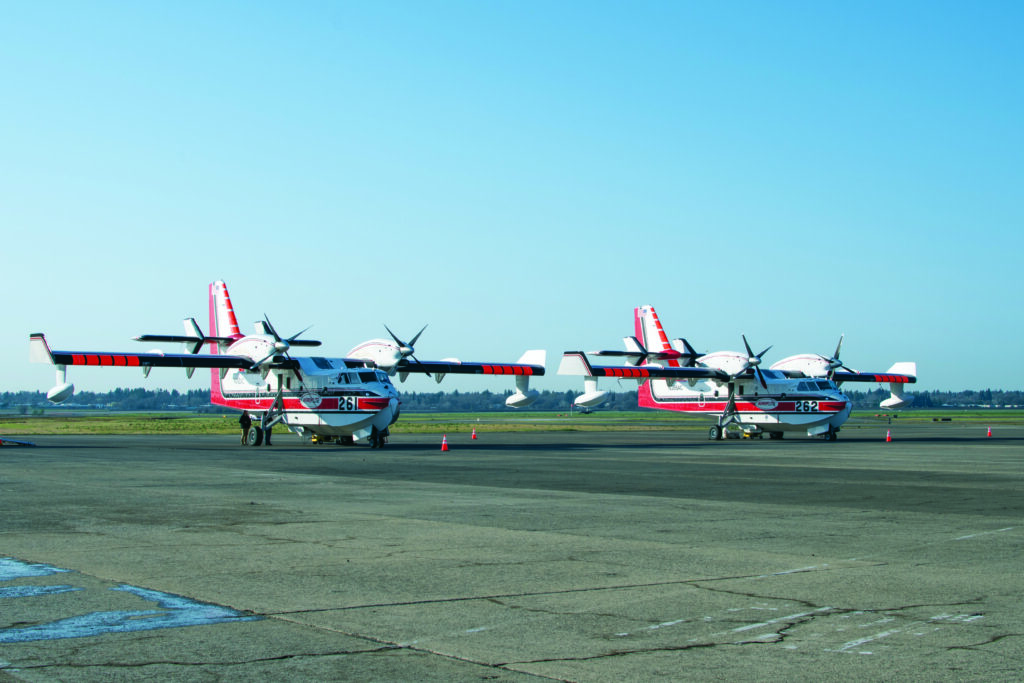
Logistics
In addition to the roughly one hundred team members who descended on Chico, consisting of pilots, maintenance personnel, and support staff, Aero-Flite also loaded in ten containers of equipment, spare parts, vehicles, and other required supplies, plus a mobile control center which acted as ground control and airborne dispatch for the participating fleet.
Pilots
With seven pilots currently training to fly the Q400AT, there is still no shortage of pilots for Aero-Flite’s two other airframes, with sixteen pilots presently flying the CL-415 super scooper and twenty-six pilots flying the RJ85. While it can be valuable to have cross-trained pilots, Aero-Flite tries to keep dual-trained pilots to a minimum, with only a few pilots qualified in two aircraft to minimize the workload on the pilot, maintaining proficiency in only a primary aircraft.
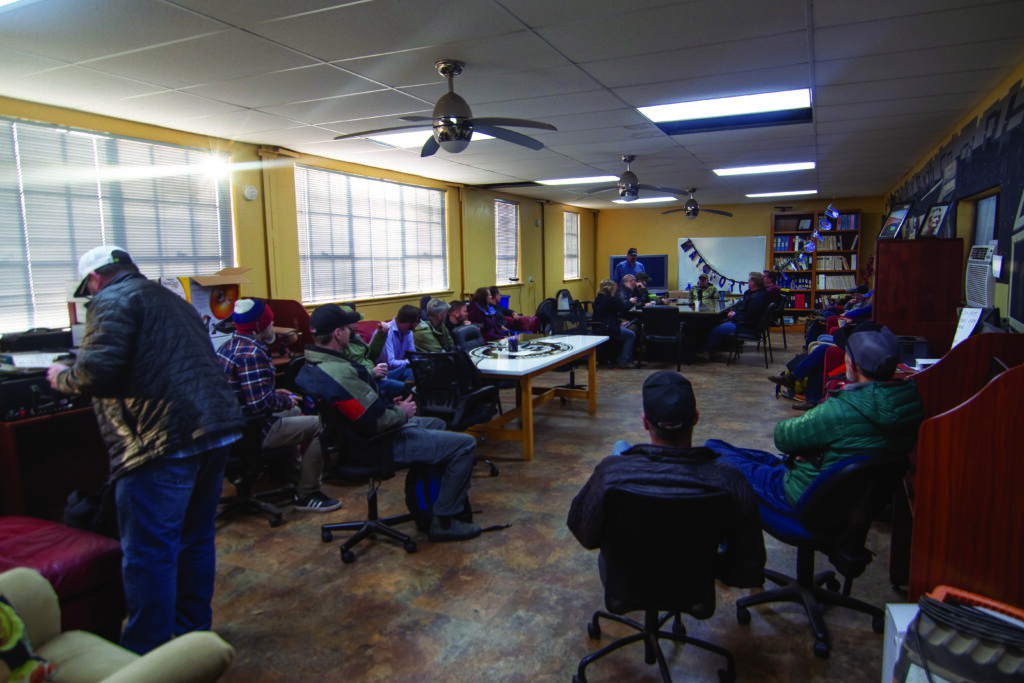
Pilots within Aero-Flite come from diverse backgrounds. Q400AT and RJ85 pilots are equally spread from the military, civilian airliner, and firefighting worlds. The CL-415, being an amphibious aircraft, requires a specific skill set often found in pilots with bush plane experience or floatplane pilots who do passenger transport in remote locations. Niemann stated that it was desirable for new hires to have a multi-engine seaplane rating. However, that qualification has become harder to find and is not a prerequisite. CL-415 Chief Pilot Jason Robinson has backcountry Alaska flying experience and time spent flying Twin Otters in the Maldives.
Introducing the Q400AT
The FAA STC was issued on the Q400AT in early April. Seven pilots are already qualified to fly the Q400AT, allowing for a rapid carding process and rollout to wildfire response across the U.S. for this coming fire season.

Upgrading Aircraft
The company maintains a diverse fleet of three different aircraft, each having a specific, focused use within the aerial firefighting world. The new addition of the Q400AT brings to the fleet a slightly lower water/retardant capacity. Still, it makes up for it through improved maneuverability and operational cost savings compared to a larger jet-engined airtanker. “It’s a very stable platform. The Q400AT’s power gives us the ability to respond faster, from firing up the engines to taxiing out and taking off, with a quicker dispatch than the jet. So I would say that our response time is going to be drastically shorter,” said Brock Hindman, an Aero Flite Chief Pilot who recently transitioned from the RJ85 to the Q400AT.
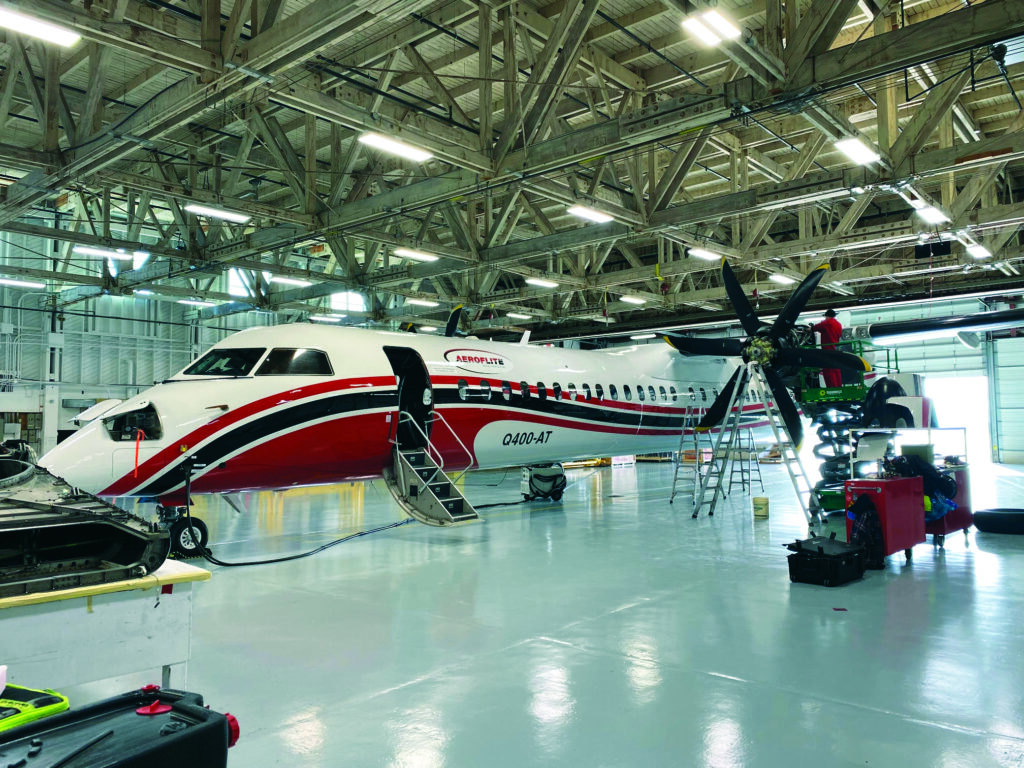
Recurrent Training
In the RJ85, each pilot must do at least two water drops and two hours of tactical flight training during spring training in Chico each year. They also must complete their night currency in the company’s Part 142 flight simulator.
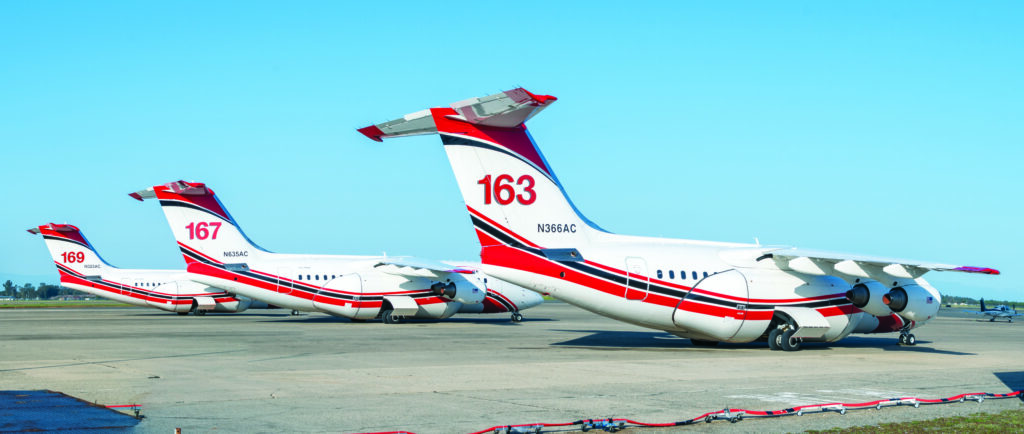
“On the first flight in Chico, we take pilots with a fully loaded airplane to a higher altitude and do maneuvers such as steep turns while loaded. We run through a stall series to show how the aircraft reacts at each flap setting. We transition from there into a maximum rate of decent down to the tactical area, and from that point, we delve into tactics,” said Hindman.
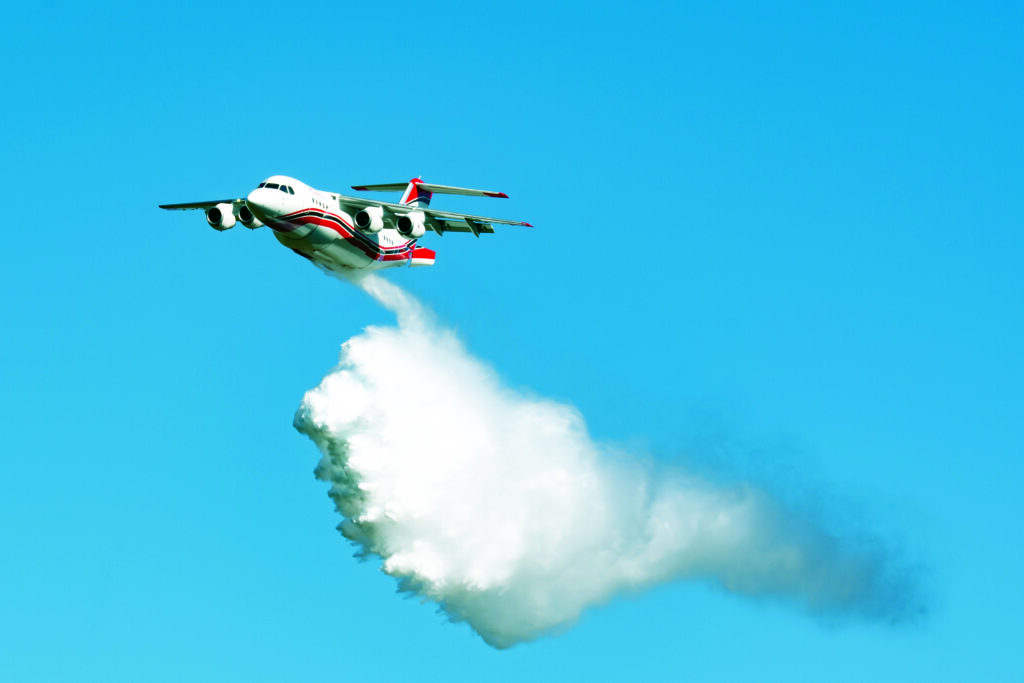
Aero-Flite’s General Manager Chris Niemann added that while core competencies are addressed through comprehensive training, the minimum requirements are far exceeded. Crews work through complex scenarios using virtual reality simulator training that enables each pilot to visualize the fire traffic area just as it would appear in the real-world environment. “It’s really a crawl, walk, run approach, where crews get classroom refreshers, then fly the simulator for at least three hours of procedural and tactical training before completing a check ride. We then bring all crews down here to Chico and do the virtual reality training, which walks you through the fire traffic area tactics. The V.R. training is different than the simulator training because it is not procedural to the aircraft; it’s procedural for the fire traffic area. Crews then complete training with another two flights in the aircraft, operating in our simulated fire environment before being carded for the season,” said Niemann.
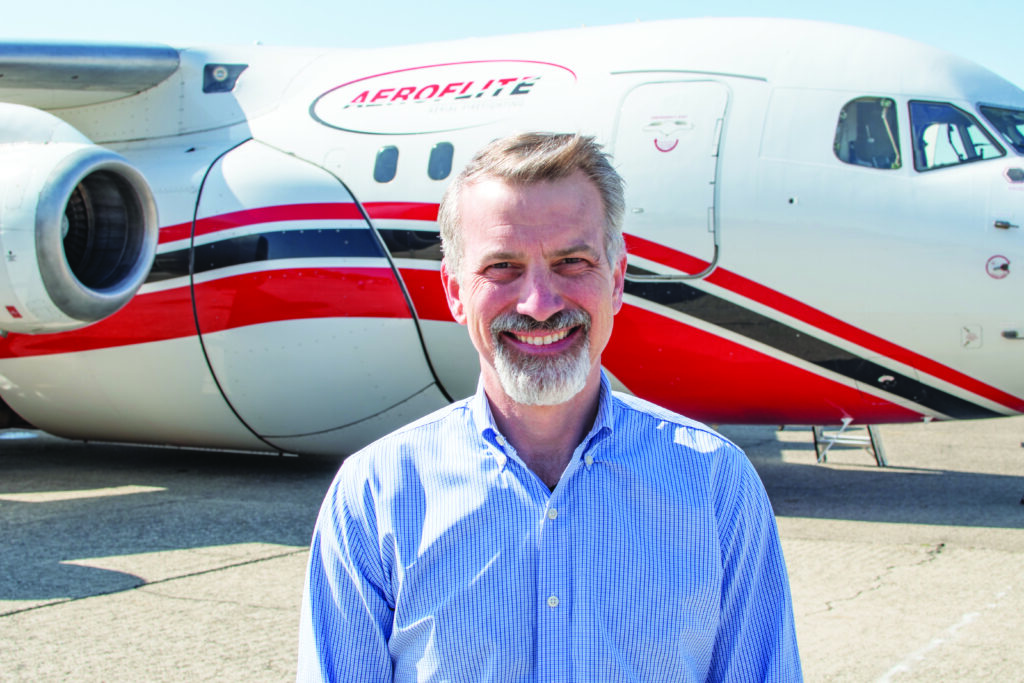
The Drop Zone
Aero-Flite contracts with a 1500-acre property northwest of Chico to simulate a fire in a valley surrounded by complex terrain for training purposes. The drop location in this area is staffed by ground team members who set up a realistic drop zone, complete with simulated fire lines, dozer lines, and simulated smoke from smoke generators to add realism for pilots conducting water drops. In addition, ground crews are tasked with simulating air attack and ground crew communications.
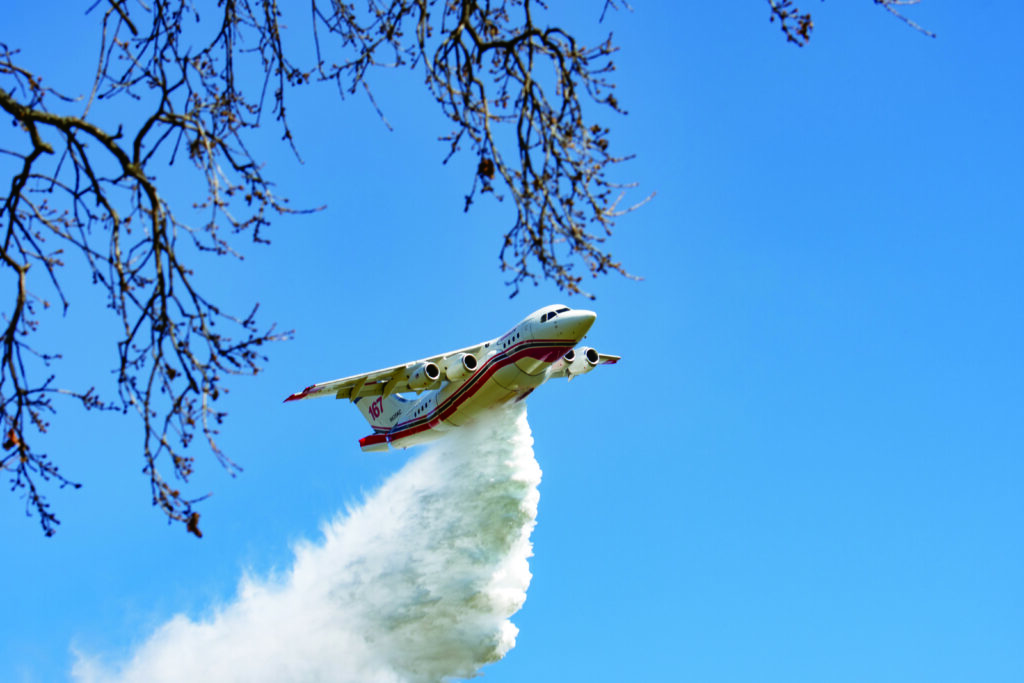
In addition to using the area as a training ground, the same area is used by the RJ85 and CL-415 for carding runs with the United States Forest Service.
Shaping the Training Syllabus
Jason Robinson has decades of experience in flying, not only in commercial aviation but in the fire environment. Those years of experience helped him and the team at Aero-Flite continually refine the training program, progressing from what was a standard training syllabus to what is now a robust training program which embraces the latest in technology. In addition to classroom learning, type training, and on-wing training, Aero-Flite provides immersive virtual training to pilots using advanced simulators, giving each pilot a solid foundation to continue building on their real-world experience.
Involving the Real World
Complimenting their vigorous safety program, the team at Aero-Flite reviews every real-world incident in the aerial firefighting world to ascertain if it is an incident that the company can learn from, adapting their training to circumvent any possible issues that could lead to a similar outcome. “We take lessons learned from all industry incidents and adapt them into our training program. For example, if there has been an industry incident of dropping too low, we spend time in our training addressing that topic,” said Robinson.
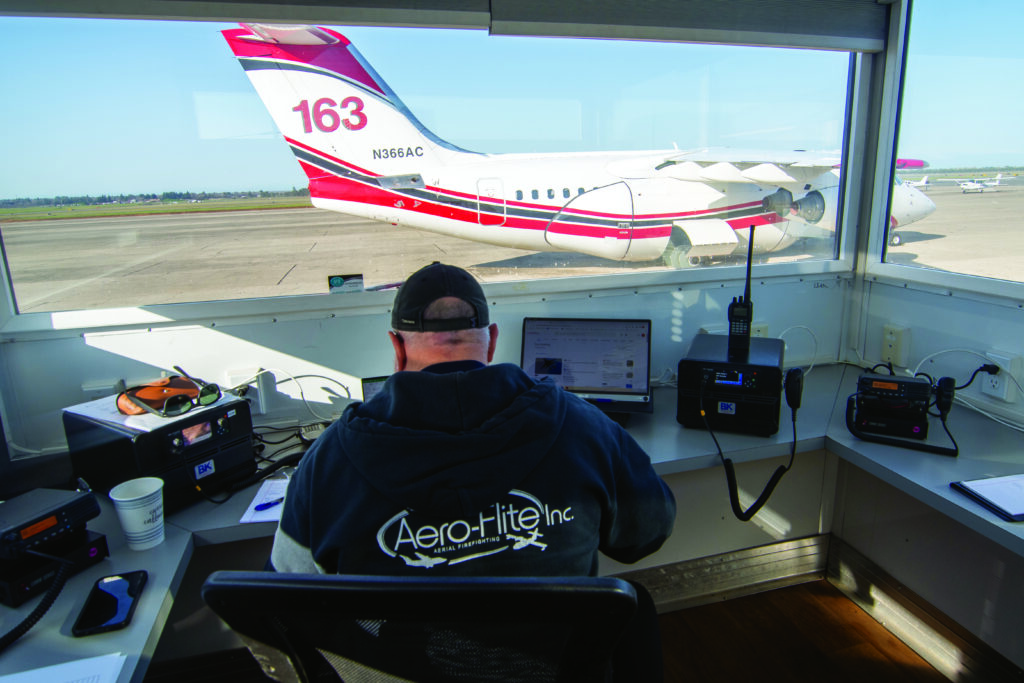
Simulators
In addition to flight training at Chico, an immersive virtual reality simulation setup was created at the offsite location. The simulator experience involved live communication with other aircraft in the fire traffic area, including a lead plane and helicopter. Pilots performed an entire flight with retardant or water drops and communications with air traffic control, incident controllers, and other aircraft. V.R. goggles simulated the cockpit, coupled with augmented reality, enabling pilots to see their own hands manipulate simulator controls.
This mobile simulator in Chico was complemented by the advanced simulator training available to Aero-Flite pilots at Conair’s Training + Tactics Centre in Canada, where they practice aerial firefighting maneuvers in the Level D RJ85 full motion simulator plus the newly expanded Mission Training System, where pilots operate together in six integrated Flight Training Devices over a synthetic wildfire, with fire and smoke reacting to drops, wind, terrain, and fuel type, just like it would happen in real life.
Investment in the Future
In addition to being committed to training advancements, Aero-Flite is about to break ground on a brand new 102,000-square-foot facility in Spokane that consists of 40,000 square feet of hangar space and customized spaces, from a machine shop to an engine shop.

The new area will be a significant improvement for the Aero-Flite team, according to Chris Niemann, who states that the current facility was a World War II-era hangar, modified over the years to accommodate a growing fleet. The new facility will enable the arrival of additional Q400ATs, recently approved for their use in the United States as an aerial firefighter.



